- Home
- Paul Christopher
Templar Throne Page 11
Templar Throne Read online
Page 11
The island stronghold was first occupied by a simple chapel, then a monastery, and was eventually fortified. A small harbor was built at the foot of the cliffs surrounding the monastery and became a favorite watering place for ships from the European continent on their way to the Irish ports of Cork, Galway and Dublin.
With the Norman Conquest of 1066 by King William of Normandy, the Benedictines from Mont Saint-Michel built a monastery there, eventually turned into a fortress by Henry VIII. In 1659 the entire island was purchased by Colonel Sir John St. Aubyn, the eldest son of the High Sheriff of Cornwall and a staunch supporter of Charles II against the wily republican Oliver Cromwell. St. Aubyn then began the process of transforming the old church, the abbey and the castle into a single enormous family house on the summit of the island. The island has been in the family ever since and is still occupied by them, although vested ownership of St. Michael’s Mount is in the hands of the National Trust.
By five in the afternoon Holliday and Sister Meg had parked the car on King’s Road in Marazion, and with the causeway covered by high tide they’d taken a sightseeing launch over to the island.
It was still raining fitfully and a gusting wind had put up a healthy chop on the tarnished silver of the ocean. Only four old diehards had come with them, huddled in the bows of the old lifeboat in rented oilskins. It took them less than ten minutes to cross the little cove to the twin-armed harbor, but it was enough for the elderly couples to scuttle into the Sail Loft pub as soon as they arrived.
Holliday and Meg climbed the steep narrowing pathway up the hill alone, the forested crags and the castle looming over them like Dracula’s fortress in the Carpathians. The brooding sky and the harsh, distant crash of the waves didn’t make things any more attractive. Halfway up, Holliday was seriously thinking of beating a retreat to the pub himself, but the tough uphill march seemed to energize his red-haired companion. Meg’s expression was set in a grim, determined smile.
The trees on either side of the rough cobbled path were a combination of familiar pines and cedars as well as an assortment of odd- looking succulents, semitropical palms and even something Holliday swore was a magnolia straight out of Truman Capote’s South.
At long last they reached a mottled stone wall and an arched gate that led to a paved courtyard within. They crossed to another arched doorway leading to a short corridor. A bored- looking man with white hair wearing a military-style Corps of Commissionaire’s uniform sat on a stool in front of a high lectern at the end of the little hallway, reading a copy of the Cornishman, the local paper from Penzance.
The old soldier seemed a little surprised and more than a little annoyed to see them. He took Holliday’s Visa card, swiped six euros off for each of them and waited for confirmation before he handed them their tickets. He gestured toward a table full of colored brochures and went back to his newspaper. They edged past the lectern and continued down the corridor and then down a short set of stone stairs to a vestibule of sorts, short corridors going to the left and right with another set of stairs and a longer hallway straight ahead.
“Do you really think we’re going to find anything after all this time?” Meg asked, looking through the brochure she’d picked up. Somewhere in the distance, muffled by the thick stone of the castle, Holliday could hear the thumping chatter of a helicopter. He was surprised; it was hardly flying weather. Probably some Sunday sailor in need of rescuing.
“You never know,” said Holliday. “They came here on the return trip; maybe they also stopped on the way to wherever they were going. The church was here at the time. The old records might tell us something if they still exist.”
“According to the brochure the entrance to the church is down the stairs, straight ahead. The St. Aubyn Library is to the right past something called Sir John’s Room and the Armoury.”
“Church first,” said Holliday.
The Priory Church formed the core of the sprawling castle, cloisters, kitchens and other chambers and halls leading off from it. The church itself was quite plain, quarried stone, two aisles of arches and a Rose window at either end, which was uncommon. There was a carved wooden altarpiece in the shape of an eagle with outstretched wings and rows of light wood chairs, spindly beside the heavy stone pillars of the arches stretching back from the choir.
The stonework was very old and undecorated in the old Benedictine way. Not so the triptych east window, all three panels showing an immense winged figure of the archangel Michael, massive sword in his right hand and a long narrow shield clenched in his left, the famous motto clearly visible: Quis Ut Deus.
“I am like God,” translated Meg, staring up at the enormous figure outlined in lead. St. Michael’s robes and armor had been done in glass squares and diamonds of deep yellow and blood red. The blue eyes were so dark they looked almost black.
“I could never understand if that meant he was God, or just the representative of God,” said Holliday, vaguely recalling a few bits and pieces from his parochial school past.
“He had been invested with the power of God so that he could smite the Devil in the desert,” answered Meg.
“That obviously didn’t work out for him,” said Holliday. “Because the Devil’s still in business.”
Meg ignored the observation.
“He was also the first knight and the one who invented the concept of chivalry,” she said as though it was an answer.
Holliday didn’t argue. “More to the point, he was the archangel most often associated with the Masons and the Templars,” he responded.
Meg stared around the room, scanning everywhere in the gloomy wood-beamed hall for anything that would provide a clue to Jean de Saint-Clair and his voyage with the Blessed Juliana.
“There’s nothing for us here,” she said finally.
Holliday nodded in agreement. “Let’s try the library,” he suggested.
They went back through the church, leaving through the south exit this time, directly across from where they’d entered. They went up a short flight of steps and into a complex of rooms that had originally been the residence of the prior of the church. All the rooms were arch-roofed within, the oak black with age. As they went down the short connecting passageway the small glass panes in the leaded windows began to rattle.
The helicopter Holliday had heard before now sounded as though it was directly overhead. It was a big one, and Holliday thought he could detect the telltale signature slow thump of a multi-rotored Sikorsky S-61, or its British counterpart, the Sea King. Maybe the capsized day sailor had gotten lucky after all, pulled out of the drink in the nick of time; the weather outside wasn’t getting better as the day wore on, that was certain. Holliday could hear the rain pelting the window like hail. The walk back down to the harbor wasn’t going to be any picnic, either. He was surprised the helicopter was flying at all. Holliday and Sister Meg continued down the hall as the chopper thundered overhead, the sound of the rotors fading.
The library was immense, lit by leaded clerestory windows that would have illuminated the rows and rows of leather-bound volumes in the bookcases that lined the room if there had been any sun. As it was, the gloomy weather outside turned the room into a dusty cavern. Riding above the bookcases on the interior side of the room was a huge medieval embroidery, unrolled, cased in wood and glass like the rare books below.
According to a discreet National Trust plaque beside the open doorway, the embroidery predated the Norman Conquest and was thought to have been created by the original Benedictines who had occupied the island.
Purportedly the two-hundred-and-seventy-foot banner had been stitched by a young monk, Morgan of Clare, who swore he’d seen a vision of St. Michael in the ovens of the abbey while he was baking bread in the early morning hours one day. He dedicated the rest of his life to creating the long linen work of art. The embroidery, like the much more famous Bayeux Tapestry in France, was actually an illustrative timeline of the abbey and of St. Michael’s Mount.
Dismayed, Meg sta
red at the cases of books. She tried the handle on one of the multipaned glass doors. Not surprisingly it was locked. She turned to Holliday and shrugged.
“Now what?” Meg asked. “We can’t look for clues in books we can’t get at.”
“Maybe we won’t have to,” said Holliday, squinting up at the long embroidered banner above the bookcases.
16
“The tapestry?” Meg asked. “What about it?”
“I think our friend Brother Morgan of Clare was something of a historian,” explained Holliday, squinting up into the gloom. “He certainly had access to whatever constituted a library or scriptorium in the old abbey.”
Meg followed his glance.
“What exactly are you looking at?”
“There, just to the left of where the middle window starts.”
“A knight in armor being attacked by another knight. A man being burned at the stake. Two men on a single horse. A battle?”
“It’s a date. Friday, October 13, 1307. The Templars are being attacked, their leaders burned at the stake. The two knights on a single horse is the symbol of the Templars. The whole embroidery’s been done that way. Not only was Brother Morgan a historian, he was also a canter.”
“A singer?” Meg asked.
“Canter with an e,” said Holliday. “It’s a term in heraldry where the designer of a coat of arms makes visual puns from a person’s name. Elizabeth Bowes-Lyon, the old Queen Mother and the wife of George VI. The family crest is bows and arrows and lions, Bowes, Lyons. Princess Beatrice of York has three bees—bees thrice, over the royal arms of York. A canter invents the crests. Morgan was doing the same thing here. It’s a rebus, an old-fashioned word puzzle.”
“You lost me back at bees thrice,” said Meg.
“It’s simple. Look at the embroidery. Two knights on a horse. The Latin word Iulia and a woman wearing black robes, followed by a two-masted, lateen-sailed ship with a sail flying an engrailed cross, followed by an island with a castle on it, and the Greek word ichthys enclosed with the symbol of the fish.”
“The old symbol for the Christian Church,” said Meg. “I get it now. Sort of.”
“The two knights on a horse means a Templar, Iulia and the woman in the robes is your Blessed Juliana, a boat with a lateen sail like that was a classic Venetian design, and an engrailed cross was the arms of the Saint-Clairs. Ichthys was an ancient puzzle on its own: iota, chi, theta, upsilon, sigma were all letters referring to Christ. Arranged in a five-character square it could be read in any direction. It’s called a palindromic acrostic, or a magic square. On top of all that, Ichthys was also the original name for St. Michael’s Mount. Put it all together and you get: A Templar knight and the Blessed Juliana came to St. Michael’s Mount in a Venetian ‘nau’ sometime after the fall of the Templars in 1307.”
Meg looked at the next set of symbols and letters.
“Some barrels, something that looks like meat being butchered, the ship with the cross on the sails again and then the word ‘Iona’ with a ball and cross after it.”
Holliday translated the stitched, doodle-like images.
“The ship took on water and food then left for the island of Iona. I wrote a paper about Iona when I was at Georgetown. It’s an ancient sacred island in the Scottish Inner Hebrides. Norwegian, Saxon and Scottish kings are buried there. There was an abbey on Iona a lot like this one. It’s also just about the end of the world, or it was at the time. Go north and you might hit Iceland if you were lucky. Go west and there was nothing between you and North America.”
“That was remarkably simple,” said Meg.
“Sometimes things are exactly what they seem,” said Holliday with a grin. “Like Freud said, sometimes a cigar is just a cigar.” He shrugged. “You don’t have to look for clues and secret symbols everywhere in history; Hitler wasn’t in league with the Devil or the Illuminati, he was just your average everyday maniac. Stalin was another one.”
“And sometimes life is more complex than it looks,” warned Meg. “Sometimes symbols are everything.”
They started out of the library, heading into a long passageway that the brochure indicated was the way to the exit.
“Are you talking about the Dan Brown character’s idea of symbolism or the Catholic Church?” Holliday asked.
“I’m talking about the fact that symbols often mean a great deal to people. Christian relics are like that. The Shroud of Turin doesn’t have to be genuine for people to take great peace and solace from it. If it leads them to prayer or contemplation that’s enough sometimes. A relic doesn’t have to perform miracles. The discovery of the True Ark would bring many doubters back to the faith. That’s why it’s so important to find it.”
“Like seeing the Virgin Mary cooked into a taco shell?” Holliday said.
“Whatever toots your horn,” said Meg as they headed down a narrow flight of stairs. Coming from a nun the line was so unexpected that Holliday burst out laughing.
He glanced out the streaming arched window on his right, the laughter fading. The view through the old leaded glass panes was of the forest pathway up to the castle and the harbor beyond. At the foot of the harbor Holliday could make out the fat, insectlike shape of a black Westland Sea King helicopter, its eight-bladed rotor still spinning lazily. The big side door of the sinister-looking machine was open and men in black riot gear were pouring out, one after the other. Not a rescue mission after all.
“Jesus,” whispered Holliday.
“Pardon?” Meg asked, startled.
“Trouble,” said Holliday. “SO19. The Brit equivalent of a SWAT team.”
“Swat?” Meg said. Holliday’s eyebrow rose.
“Special Weapons and Tactics,” Holliday explained.
He stared out the window and down to the base of the wooded hill. Twenty men had formed up in two lines in front of the big black chopper.
“We’ve got to find another way out of here,” said Holliday. “And we’ve got to find it fast.”
“Maybe they’re here for something else,” suggested Meg, staring out the window now. Holliday let out a short barking laugh. Could she really be that naïve?
“They’re here for us, believe me.”
He tried to remember what he knew of the elite armed response police. He vaguely recalled that they carried Glock 17 automatic pistols, Heckler & Koch MP5 machine guns, HK G3 assault rifles and Benelli riot shotguns. They also carried stun grenades, Tasers, tear gas and pepper spray. Twenty of them were enough to start a small war. It was unbelievable overkill to capture two unarmed civilians. Someone had called in a fat favor, that was for sure. But who?
There was no time to think about that. Holliday tore the brochure out of Sister Meg’s hand and scanned it, his brain working furiously. The SO19 team would have been briefed and prepared, most likely using aerial photographs. It wasn’t hard these days; you could plan an operation like this using Google Earth.
The twenty men would have been divided into squads, two to flank and one up the center through the woods. There were three paths: the middle one through the woods, one to the left following the sloping terrain, and one to the right going down the steeper western side of the island stronghold, beginning at the old abbey ruins and the ornamental gardens. Ten men up the middle, through the woods, five each on the flanking paths. There was no way to escape.
“What do we do?” Meg asked.
Holliday’s first commanding officer had a primary rule in critical situations—make a decision as fast as you can. It may be the wrong one, but even a wrong decision is better than no decision at all.
“What they don’t expect,” said Holliday. He grabbed Meg by the hand and headed back the way they’d come, going back down the hallway, through the library and back into the chapel. They cut across the nave of the church, ran up the steps and out onto the south terrace, looking out to sea. It was still pouring rain and they were soaked in seconds.
There was a single stone staircase in the old battlement tower.
It had to lead somewhere. Holliday stepped up, looking out and down, trying to orient himself, praying that there was a pathway down the southern cliff that could take them down to sea level. The tide was just beginning to turn; maybe a strip of beach would be exposed, allowing them to circle around.
He peered through the curtain of rain, holding his hand above his eyes. There was no obvious path, but maybe they could pick their way down over the tumbled litter of boulders and through the briars and gorse clinging to the precipitous, slightly sloping wall of stone. The clifflike wall of the castle had been well placed, facing out to sea, huge thirty- two-pounder cannon mounted in every second slot of the crenellation. If the castle was true to type there would be a secondary “postern gate” at the bottom of the battlement tower stairway. A postern gate that wasn’t shown in the brochure and wouldn’t be visible on any diagram or photograph used by the SO19 squad.
“This way,” urged Holliday. He took Meg by the hand again and led her to the battlement tower.
The stairway offered some protection from the rain and cold as they descended. At the bottom of the stairs, as Holliday had hoped, there was a hallway that followed the line of the castle wall. Fifty feet along the narrow tunnel was an iron-strapped arched door way.
Holliday took a deep breath, then pushed down on the latch and pulled. The well-oiled door opened without a sound. The present occupant of the castle, Lord Levan, clearly took care of his property. They stepped out into the rain again.
“Hurry,” said Holliday; reflexively he looked back over his shoulder, expecting to see a figure in black Kevlar step out and mow them down with his MP5. So far there was nothing.
“It’s slippery,” complained Meg as they threaded their way down the sloping field of boulders and loose, rain-slick stones.
“So is spilled blood,” answered Holliday. It took them almost fifteen minutes to climb down. Any minute now one of the armed response team would stick his head over the side of the castle wall and spot them.

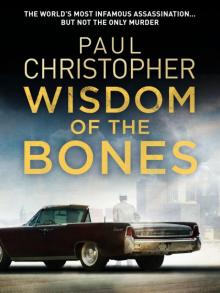 Wisdom of the Bones
Wisdom of the Bones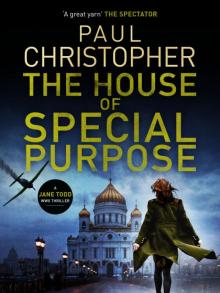 The House of Special Purpose
The House of Special Purpose The Second Assassin
The Second Assassin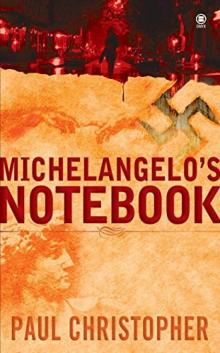 Michelangelo's Notebook
Michelangelo's Notebook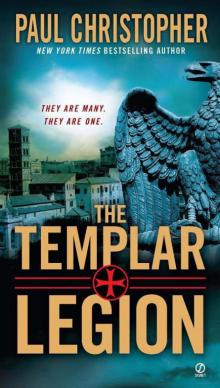 Templar Legion
Templar Legion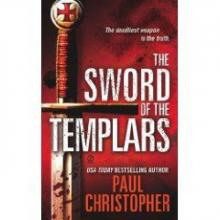 The Sword of the Templars t-1
The Sword of the Templars t-1 Red Templar
Red Templar The Aztec Heresy
The Aztec Heresy The Templar Legion
The Templar Legion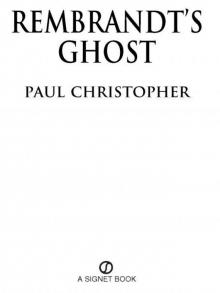 Rembrandt's Ghost
Rembrandt's Ghost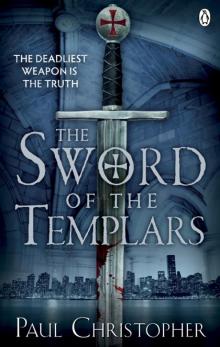 Sword of the Templars
Sword of the Templars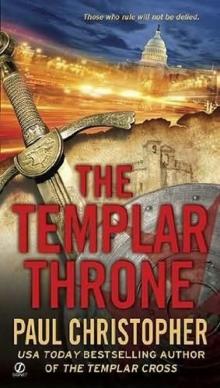 The Templar throne t-3
The Templar throne t-3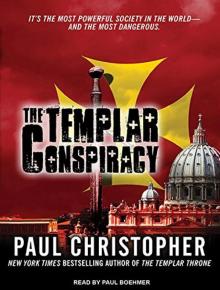 The Templar Conspiracy
The Templar Conspiracy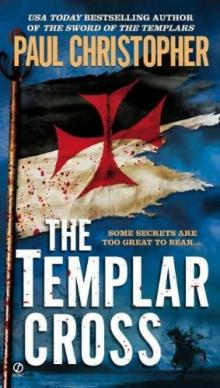 The Templar Cross t-2
The Templar Cross t-2 The Templar Legion t-5
The Templar Legion t-5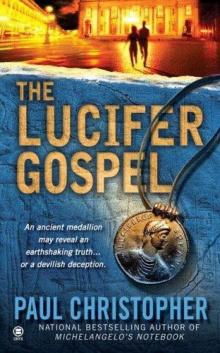 The Lucifer Gospel
The Lucifer Gospel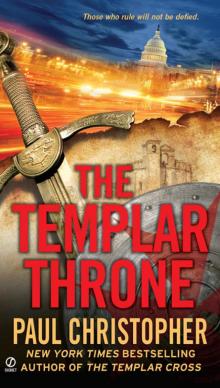 Templar Throne
Templar Throne Michelangelo_s Notebook fr-1
Michelangelo_s Notebook fr-1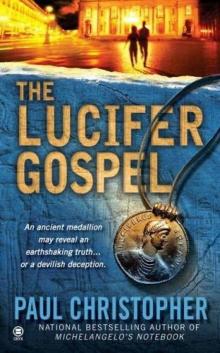 The Lucifer Gospel fr-2
The Lucifer Gospel fr-2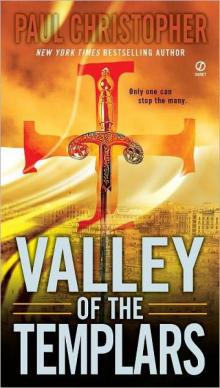 Valley of the Templars ts-7
Valley of the Templars ts-7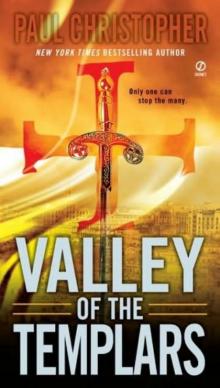 Valley of the Templars
Valley of the Templars Templar Cross
Templar Cross The Templar Throne
The Templar Throne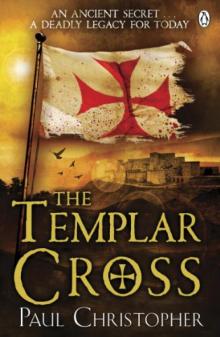 The Templar Cross
The Templar Cross Lost City of the Templars
Lost City of the Templars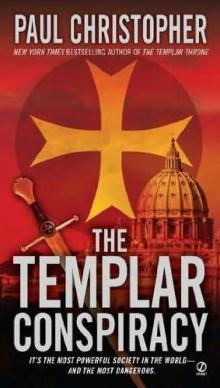 The Templar conspiracy t-4
The Templar conspiracy t-4 Templar Conspiracy
Templar Conspiracy